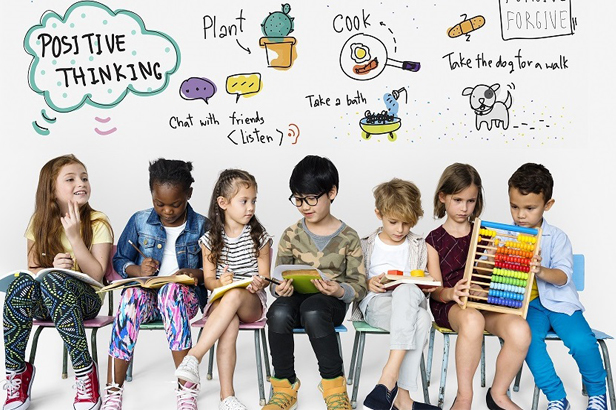
What is Mindfulness Training?
Mindfulness training is a powerful tool. In the heights of distraction and engagement, mindfulness training requires us slow down and learn to calm our busy mind.
We can use all of our sensory faculty to focus on the present moment. By being attentive, rather than distracted by the past that we cannot change, or the future that we can only imagine, we listen more carefully, work more efficiently, taste more food, and notice more about ourselves, others and the world around us.
You can provide mindfulness training to your little ones with these fun and beneficial games:
1. Playing with Balloons- Tell the children that the goal of this game is to keep the ball on the ground, but to keep moving it slowly and smoothly. You can tell them to pretend the ball is very fragile if that helps. This is the perfect way of slowing down more active kids who still who need mindfulness training games that involve a little more movement.
2. Blowing Bubbles- This sensory experience takes the kids away from the analytical mode of learning. Ask your children to focus on deep, slow breathing and steady exhaling to form the bubble. Stimulate them to be attentive to the bubbles as they take shape, burst, or float away in the air.
3. Blowing Pinwheels- This breathing practice effectively captivates the visual senses of children and slows things right down. Ask them to use the same strategy learned while blowing bubbles to draw attention to the spinning pinwheels.
4.Blindfolded Taste Tests- Blindfold each child and have them try to eat small foods like a cranberry or raisin, as if they were tasting it for the first time. Ask them to utilize all their senses to describe the food item you present, saving the sense of sight for last.
5.Texture Bag- This tactile guessing game will effectively engage their attention and curiosity. Place a few small items with an interesting shape or structure in the bag. Ask each child to take turns grabbing and touching the object and describe what they feel. Ensure that they don't remove the item from the bag and have them only use the sense of touch to explore the item.
If you are looking for mindfulness training for children, please visit The Mindfulness Academy of Asia (MAA)

